Walmart Art Supply Review: Daler Rowney Simply... Watercolour
Daler Rowney is a brand I think most artists are passingly familiar with, but perhaps few of us really use. I know the Luling Walmart has sold their products off and on over the years it's been open, but while I'm fairly sure I've worked with their products before, I can only really remember buying their acrylics in high school, and I've never really enjoyed working with acrylics.
The website lists a lot of products, from paints (watercolor, acrylic, oil) to even luggage. Daler Rowney seems to offer three lines of watercolors on their site: Artists' WaterColour, AquaFine, and Simply Watercolor. I'll be testing the Simply Watercolor, found at my Luling Walmart, in this post, but may revisit Artists' Watercolour and AquaFine at a later date. The Artists' WaterColour line seems to be their premium line, with 80 different colors available in 5ml or 15 ml tubes, or in artists' watercolor pans. These colors are available in a variety of sets. AquaFine is aimed at students and hobbiests. There are 37 available colors in the AquaFine set, and colors are available in 8ml tubes, or in half pans. Colors are also available in sets. SimplyWatercolor is Daler Rowney's bottom of the barrel line, with a strong focus on being 'affordable' rather than good. These are probably intended for children with an interest in art who have parents with no interest in spending the money necessary to acquire decent supplies. SimplyWatercolor are available as 12ml tubes, pans, and even poured cakes, although my Walmart only had a couple beaten up boxes of the 12ml tubes in 12 packs on offer.
Upon exploring the site, I realize I own and regularly paint with a few brushes produced by Daler Rowney, such as the Sapphire Watercolor brushes and Robert Simmons brushes. I believe these were purchased at Michaels a few years ago- I did not see any of these brushes at the Luling Walmart.
The pack I purchased features:
White
Lemon Yellow
Vermillion (Hue)
Crimson Red
Cerulean (Hue)
Ultramarine
Sap Green
Viridian Green (Hue)
Yellow Ochre
Burnt Sienna
Burnt Umber
Black
These tubes were made in England
According to the back of the box:
The Packaging
The packaging was already wrecked when I bought it, but the other box on the shelf wasn't in much better condition. I'm pretty sure both have been purchased and returned, which doesn't really bode well.
The watercolors are stored in a plastic tray that holds them in place. The watercolors come in metal tubes with a twist cap reminiscent of a toothpaste cap. The cap has a little piercer to open the watercolors, so we'll find out soon enough if these watercolors were purchased and returned.
Despite the box looking like it'd been kicked around Walmart for a week, the tubes are all unopened at time of purchase.
The Paints
All of my caps ended up with paint on the piercing piece.
This is something you don't really experience with more expensive brands of paint. Be careful when opening your paints, some of them may have been compressed during their time at Walmart, and may be under pressure.
The Swatches
Straight from Tube
Even straight from the tube, the Chinese white is wholly unimpressive. Generally, I just rely on white gouache for my white highlights.
As soon as I pierced the blue, it squirted all over my leg and anti fatigue mat. Now you see why I warned you to be careful!
All of these paints are very liquidy- I'm curious what binder they're using, and often with higher quality paints, they do separate over time. There appears to be no separation with these, and I'm curious as to how Daler Rowney managed that. I've heard that lower grade watercolors use glycerin rather than sucrose or honey, but I can't seem to find any verification- if you guys have any links on that topic, please send them in!
Straight from the tube, the black performs the best- the pigments dissolve quickly and coverage is even. The other colors perform exactly like what they are- student grade watercolors, although they're definitely a step up from kid's watercolors like Crayolas (stay tuned for that review!)
Allowed to dry and used on palette
Making portable, dry watercolors is fairly easy. While tube watercolors do handle a lot differently than watercolors that originally come in cakes and pans, most tube watercolors can be dried and reconstituted successfully. I wanted to see if Daler Rowney Simply Watercolors could hold up to drying and rewetting, so I simply applied a little dot of paint in each well of a palette, and allowed my little paint dots to dry fully.
Although they look wet, these are now fully dry, and ready for swatching!
For the rest of this review, I'll be using the Royal Langnickel watercolor brushes. The review for that is coming up soon, so if you're interested in how those handle, keep watching this blog.
The reconstituted Daler Rowney Simply Watercolors are much less saturated than the color straight from the tube, which may make them easier for you to work with. I prefer my color less saturated, as it allows me to build up layers.
The dried watercolors reconstitute ok, the browns are a little stiff, but as always, if you pre-wet your watercolors with a drop of water, they should mix up pretty quick.
I am REALLY curious about what pigments these paints use, because the tubes release color pretty quickly given the price, and the dried colors are slow to release pigment even after they've been activated.
The Field Test
So my setup for this field test includes the dried palette I prepared ahead of time, my swatchbook for color reference, a clean watercolor palette, and the test piece that's been masking taped to my plastic gatorboard, which serves as a support.
As mentioned above, I'm using the Royal Langnickel brushes for this Field Test- it gives me an opportunity to test them out along with the Daler Rowney watercolors.
Already, the lost saturation is causing issues, as I had difficulty mixing up a skintone dark enough.
When I was starting out, I put a drop of water into each well, to give the paint an opportunity to absorb the water. This reduces the amount of scrubbing you'll have to do to release pigment later.
This set, as large as it is, doesn't contain a purple, violet, or red violet, so you'll have to mix your own.
The pigments don't mix well at all- the pigments in the cerulean blue fall to the bottom of the palette, which leaves you with uneven color distribution.
The sepia included really isn't dark enough, so I mixed some black in.
So far though, they don't handle that poorly, just a bit pale. This may be due to the fact that cheap watercolors tend to have more binder than actual pigment, but if you want intense colors, mix straight from the tube, not from a dried palette.
The Verdict
While these aren't great watercolors, they aren't bad either and they are a definite step up from student grade watercolors like Crayola. I wouldn't say these are comparable to Winsor & Newton, Holbein, or Daniel Smith, but are more like Van Gogh, Cotman, or SoHo. Not a bad way to get started- it gets you used to working with tubes, setting up your own palette, and practicing real watercolor techniques that aren't possible with many brands of cheap cake watercolors.
Did you find this post useful? Did you enjoy it? How about sharing it with friends on Facebook, or Tweeting it to your followers? The links above the post make sharing SUPER easy- you don't even have to leave the page! If you really liked this post, or any of my posts, how about sending me a tip via Paypal using the handy donation link in the sidebar, or writing me an email? It would definitely make my day!
The website lists a lot of products, from paints (watercolor, acrylic, oil) to even luggage. Daler Rowney seems to offer three lines of watercolors on their site: Artists' WaterColour, AquaFine, and Simply Watercolor. I'll be testing the Simply Watercolor, found at my Luling Walmart, in this post, but may revisit Artists' Watercolour and AquaFine at a later date. The Artists' WaterColour line seems to be their premium line, with 80 different colors available in 5ml or 15 ml tubes, or in artists' watercolor pans. These colors are available in a variety of sets. AquaFine is aimed at students and hobbiests. There are 37 available colors in the AquaFine set, and colors are available in 8ml tubes, or in half pans. Colors are also available in sets. SimplyWatercolor is Daler Rowney's bottom of the barrel line, with a strong focus on being 'affordable' rather than good. These are probably intended for children with an interest in art who have parents with no interest in spending the money necessary to acquire decent supplies. SimplyWatercolor are available as 12ml tubes, pans, and even poured cakes, although my Walmart only had a couple beaten up boxes of the 12ml tubes in 12 packs on offer.
Upon exploring the site, I realize I own and regularly paint with a few brushes produced by Daler Rowney, such as the Sapphire Watercolor brushes and Robert Simmons brushes. I believe these were purchased at Michaels a few years ago- I did not see any of these brushes at the Luling Walmart.
The pack I purchased features:
- 12 tubes
- 12ml or .4 US fl. oz
White
Lemon Yellow
Vermillion (Hue)
Crimson Red
Cerulean (Hue)
Ultramarine
Sap Green
Viridian Green (Hue)
Yellow Ochre
Burnt Sienna
Burnt Umber
Black
These tubes were made in England
According to the back of the box:
Simply Watercolors
Simply watercolours are affordable, basic colours that an be used to paint on all conventional watercolor surfaces. All 24 colours in the range have been formulated to give affordable colours while still providing bright transparent colours, all the colours are intermixable giving endless colour possibilities.
The Packaging
The packaging was already wrecked when I bought it, but the other box on the shelf wasn't in much better condition. I'm pretty sure both have been purchased and returned, which doesn't really bode well.
The watercolors are stored in a plastic tray that holds them in place. The watercolors come in metal tubes with a twist cap reminiscent of a toothpaste cap. The cap has a little piercer to open the watercolors, so we'll find out soon enough if these watercolors were purchased and returned.
Despite the box looking like it'd been kicked around Walmart for a week, the tubes are all unopened at time of purchase.
The Paints
All of my caps ended up with paint on the piercing piece.
The Swatches
Straight from Tube
Even straight from the tube, the Chinese white is wholly unimpressive. Generally, I just rely on white gouache for my white highlights.
As soon as I pierced the blue, it squirted all over my leg and anti fatigue mat. Now you see why I warned you to be careful!
All of these paints are very liquidy- I'm curious what binder they're using, and often with higher quality paints, they do separate over time. There appears to be no separation with these, and I'm curious as to how Daler Rowney managed that. I've heard that lower grade watercolors use glycerin rather than sucrose or honey, but I can't seem to find any verification- if you guys have any links on that topic, please send them in!
Straight from the tube, the black performs the best- the pigments dissolve quickly and coverage is even. The other colors perform exactly like what they are- student grade watercolors, although they're definitely a step up from kid's watercolors like Crayolas (stay tuned for that review!)
Allowed to dry and used on palette
Making portable, dry watercolors is fairly easy. While tube watercolors do handle a lot differently than watercolors that originally come in cakes and pans, most tube watercolors can be dried and reconstituted successfully. I wanted to see if Daler Rowney Simply Watercolors could hold up to drying and rewetting, so I simply applied a little dot of paint in each well of a palette, and allowed my little paint dots to dry fully.
Although they look wet, these are now fully dry, and ready for swatching!
For the rest of this review, I'll be using the Royal Langnickel watercolor brushes. The review for that is coming up soon, so if you're interested in how those handle, keep watching this blog.
The reconstituted Daler Rowney Simply Watercolors are much less saturated than the color straight from the tube, which may make them easier for you to work with. I prefer my color less saturated, as it allows me to build up layers.
The dried watercolors reconstitute ok, the browns are a little stiff, but as always, if you pre-wet your watercolors with a drop of water, they should mix up pretty quick.
I am REALLY curious about what pigments these paints use, because the tubes release color pretty quickly given the price, and the dried colors are slow to release pigment even after they've been activated.
The Field Test
So my setup for this field test includes the dried palette I prepared ahead of time, my swatchbook for color reference, a clean watercolor palette, and the test piece that's been masking taped to my plastic gatorboard, which serves as a support.
As mentioned above, I'm using the Royal Langnickel brushes for this Field Test- it gives me an opportunity to test them out along with the Daler Rowney watercolors.
Already, the lost saturation is causing issues, as I had difficulty mixing up a skintone dark enough.
When I was starting out, I put a drop of water into each well, to give the paint an opportunity to absorb the water. This reduces the amount of scrubbing you'll have to do to release pigment later.
This set, as large as it is, doesn't contain a purple, violet, or red violet, so you'll have to mix your own.
The pigments don't mix well at all- the pigments in the cerulean blue fall to the bottom of the palette, which leaves you with uneven color distribution.
The sepia included really isn't dark enough, so I mixed some black in.
So far though, they don't handle that poorly, just a bit pale. This may be due to the fact that cheap watercolors tend to have more binder than actual pigment, but if you want intense colors, mix straight from the tube, not from a dried palette.
The Verdict
While these aren't great watercolors, they aren't bad either and they are a definite step up from student grade watercolors like Crayola. I wouldn't say these are comparable to Winsor & Newton, Holbein, or Daniel Smith, but are more like Van Gogh, Cotman, or SoHo. Not a bad way to get started- it gets you used to working with tubes, setting up your own palette, and practicing real watercolor techniques that aren't possible with many brands of cheap cake watercolors.
Did you find this post useful? Did you enjoy it? How about sharing it with friends on Facebook, or Tweeting it to your followers? The links above the post make sharing SUPER easy- you don't even have to leave the page! If you really liked this post, or any of my posts, how about sending me a tip via Paypal using the handy donation link in the sidebar, or writing me an email? It would definitely make my day!



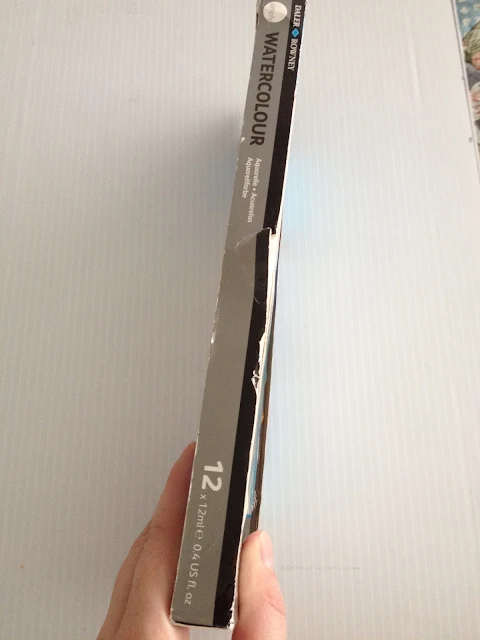







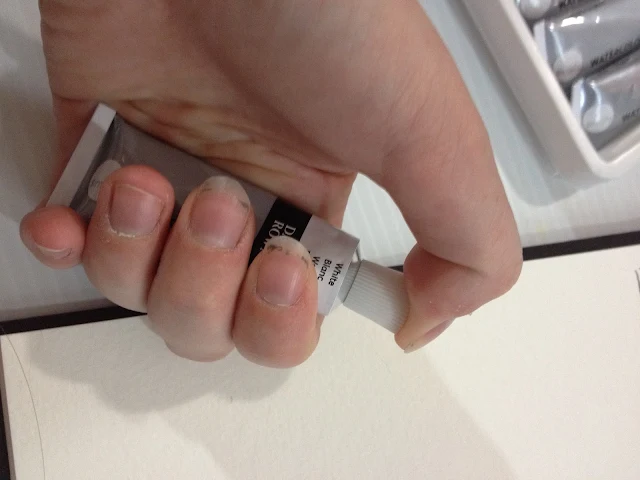














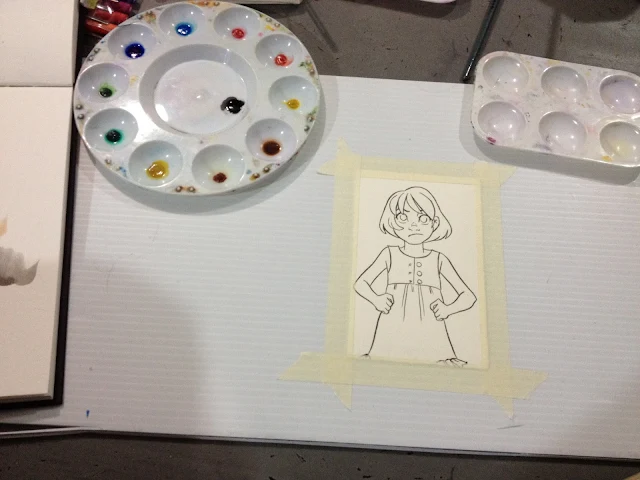





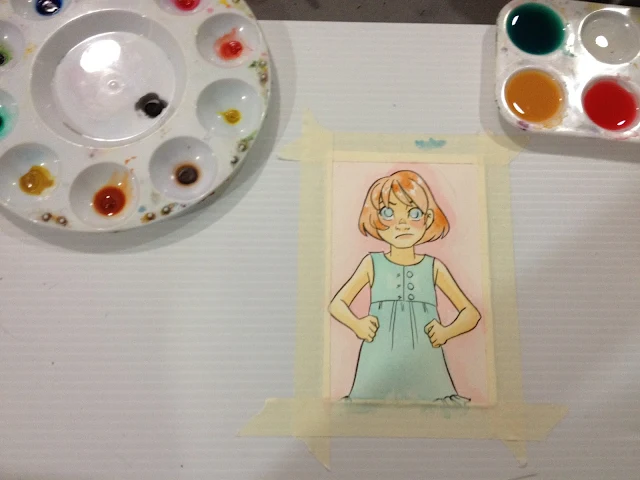

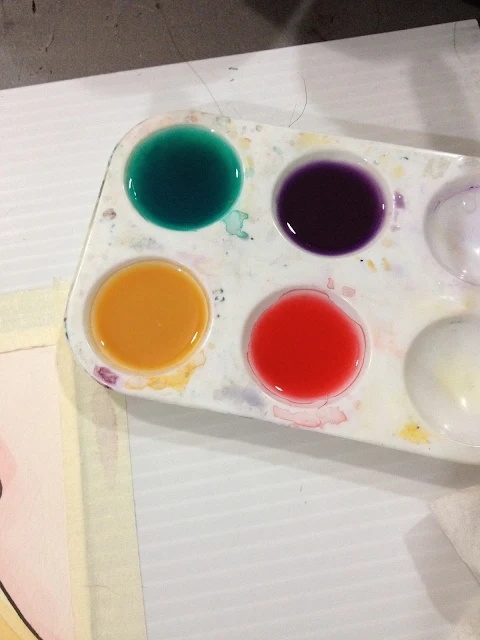






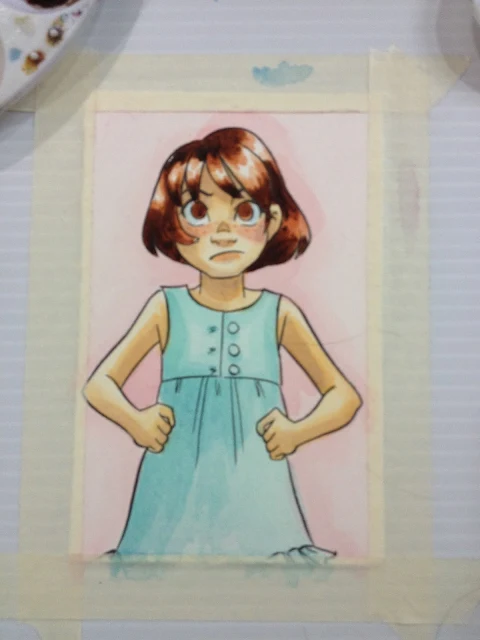






Comments
Post a Comment